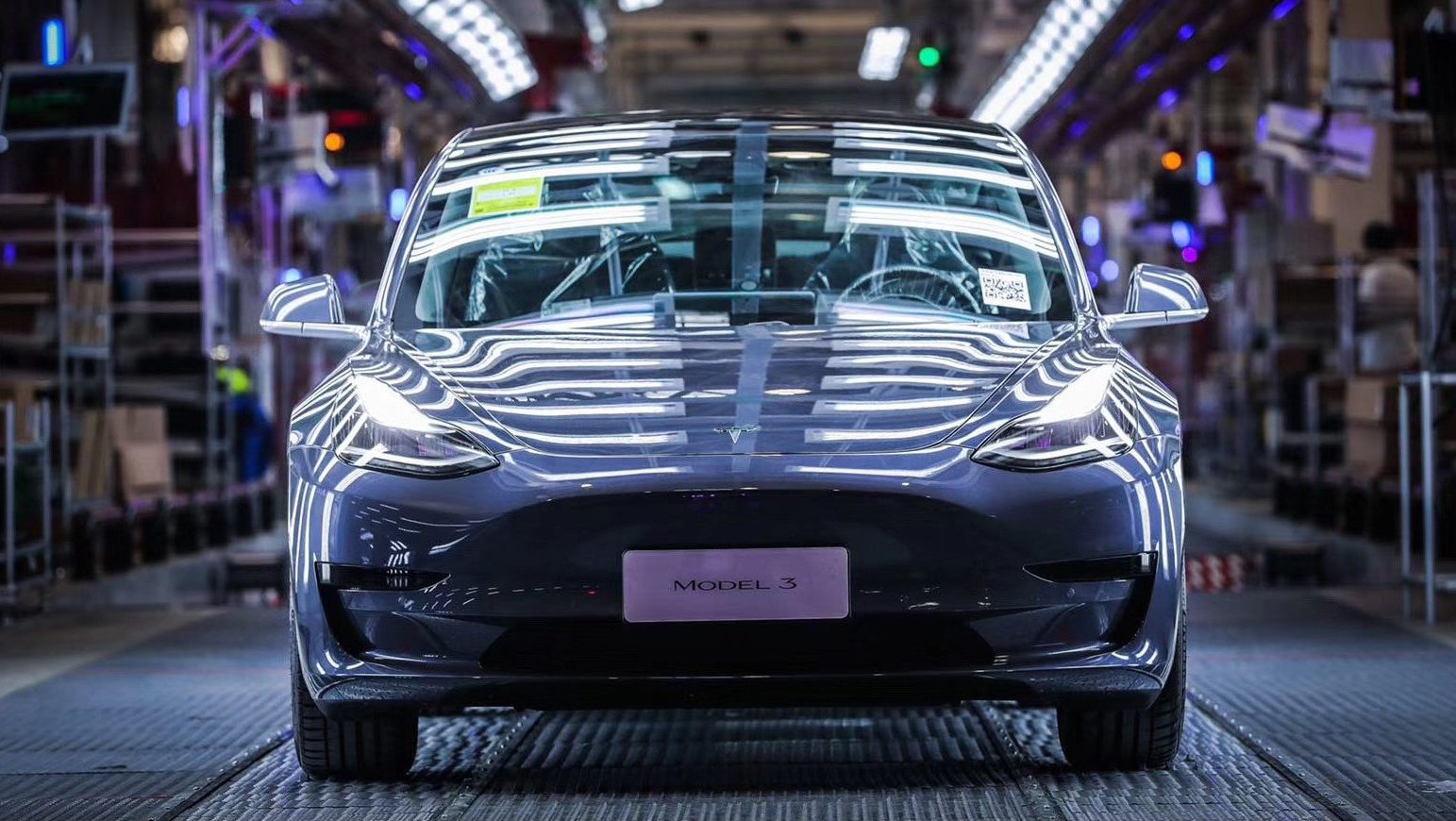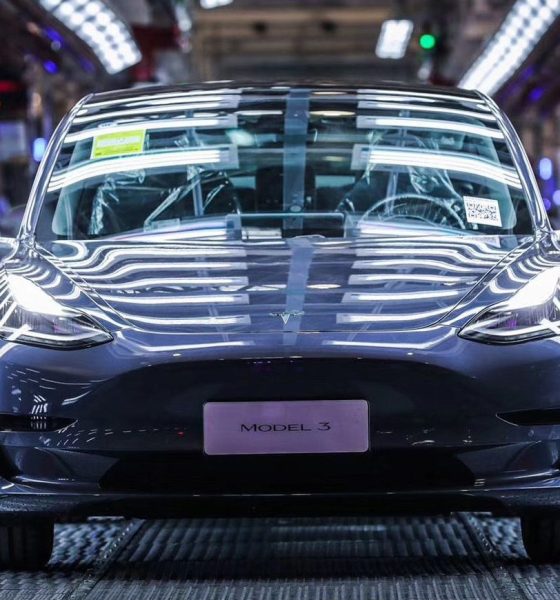

News
Tesla’s China-made Model 3 will be a cash cow for the automaker as margins set to improve even more
A new report by equity research firm suggests that Tesla’s gross margin for Made-in-China (MIC) Model 3 could increase to 40 percent or even higher, and with higher profit margins, the electric car manufacturer can create the conditions that will further help stimulate sales in the country.
The report published by China-based equity firm Chuancai Securities and shared with Teslarati by Tesla Model S/X owner and Twitter user Ray4Tesla, says that parts domestication will be key to achieve higher profit margins with the MIC Model 3.
A Chinese research paper I was reading shows the gross margin for MIC #Model3 is as high as 35% vs 20% for US-made Model 3s. Production efficiency will further improve margins. pic.twitter.com/gXGdzg7WjF
— Ray (@ray4tesla) January 15, 2020
“We assume that depending on the progress of Tesla’s parts domestication, the cost of raw materials will fall by 10%-20%. In this case, gross profit margin of Model 3 produced by the Chinese factory will reach more than 35%, which is much higher than the American factory by about 20% gross profit level,” the report reads. In October 2018, Tesla said that its Model 3 gross margins were more than 20 percent but this was adjusted when it decided to drop the price of the electric sedan to make it accessible to more US buyers.
The report also estimates that after the localization of parts, Tesla’s expenses for raw materials for the China-made Model 3 will drop by 10 to 20 percent. It also takes note of cheaper manufacturing costs and labor costs. Taking into account all of these factors, the researchers concluded that the total production cost may fall by 20-28 percent and thereby further improving profit margin.
This new report from China practically says that the MIC Model 3 has the potential to be its cash cow — read: high volume sales and higher profit margins. This is aside from the fact that Tesla CEO Elon Musk has also formally launched the Model Y program in the country during the event for the first public deliveries of the company’s mass-produced electric sedans. According to the report, buyers of the affordable SUV in the country might still enjoy preferential purchase tax, from which its smaller sibling was also exempted from.
Tesla has the potential to claim China, the biggest automotive market in the world, to be its strong foothold. If that happens, it can boost the possibility of sustained profitability for the brand that Musk wants to achieve.
With Musk planning to create an engineering and design center in China, it will not be a surprise if the Gigafactory 3 will play a key role in conquering potential markets in Asia and in pushing for the growth of the brand int its existing markets in the region.
The analysis of the researchers is consistent with earlier rumors that Tesla can further lower the price of the Model 3 once it sources parts, including expensive parts such as its battery, from local suppliers. For now, Tesla has lowered the price of the Model 3 in China to around $42,919 from the original price tag $50,000 as the new year kicked off, a move that practically undercut other brands such as BMW and Mercedes that offer vehicles in the same segment and the electric car manufacturer surely sparked more interest as showrooms in the country were filled with potential buyers.
At present, Tesla’s Gigafactory 3 in Shanghai already has a run rate of 3,000 units per week and plans to hit that production goal as more workers are added to the frontline.

Elon Musk
Tesla’s Elon Musk: 10 billion miles needed for safe Unsupervised FSD
As per the CEO, roughly 10 billion miles of training data are required due to reality’s “super long tail of complexity.”

Tesla CEO Elon Musk has provided an updated estimate for the training data needed to achieve truly safe unsupervised Full Self-Driving (FSD).
As per the CEO, roughly 10 billion miles of training data are required due to reality’s “super long tail of complexity.”
10 billion miles of training data
Musk comment came as a reply to Apple and Rivian alum Paul Beisel, who posted an analysis on X about the gap between tech demonstrations and real-world products. In his post, Beisel highlighted Tesla’s data-driven lead in autonomy, and he also argued that it would not be easy for rivals to become a legitimate competitor to FSD quickly.
“The notion that someone can ‘catch up’ to this problem primarily through simulation and limited on-road exposure strikes me as deeply naive. This is not a demo problem. It is a scale, data, and iteration problem— and Tesla is already far, far down that road while others are just getting started,” Beisel wrote.
Musk responded to Beisel’s post, stating that “Roughly 10 billion miles of training data is needed to achieve safe unsupervised self-driving. Reality has a super long tail of complexity.” This is quite interesting considering that in his Master Plan Part Deux, Elon Musk estimated that worldwide regulatory approval for autonomous driving would require around 6 billion miles.
FSD’s total training miles
As 2025 came to a close, Tesla community members observed that FSD was already nearing 7 billion miles driven, with over 2.5 billion miles being from inner city roads. The 7-billion-mile mark was passed just a few days later. This suggests that Tesla is likely the company today with the most training data for its autonomous driving program.
The difficulties of achieving autonomy were referenced by Elon Musk recently, when he commented on Nvidia’s Alpamayo program. As per Musk, “they will find that it’s easy to get to 99% and then super hard to solve the long tail of the distribution.” These sentiments were echoed by Tesla VP for AI software Ashok Elluswamy, who also noted on X that “the long tail is sooo long, that most people can’t grasp it.”
News
Tesla earns top honors at MotorTrend’s SDV Innovator Awards
MotorTrend’s SDV Awards were presented during CES 2026 in Las Vegas.

Tesla emerged as one of the most recognized automakers at MotorTrend’s 2026 Software-Defined Vehicle (SDV) Innovator Awards.
As could be seen in a press release from the publication, two key Tesla employees were honored for their work on AI, autonomy, and vehicle software. MotorTrend’s SDV Awards were presented during CES 2026 in Las Vegas.
Tesla leaders and engineers recognized
The fourth annual SDV Innovator Awards celebrate pioneers and experts who are pushing the automotive industry deeper into software-driven development. Among the most notable honorees for this year was Ashok Elluswamy, Tesla’s Vice President of AI Software, who received a Pioneer Award for his role in advancing artificial intelligence and autonomy across the company’s vehicle lineup.
Tesla also secured recognition in the Expert category, with Lawson Fulton, a staff Autopilot machine learning engineer, honored for his contributions to Tesla’s driver-assistance and autonomous systems.
Tesla’s software-first strategy
While automakers like General Motors, Ford, and Rivian also received recognition, Tesla’s multiple awards stood out given the company’s outsized role in popularizing software-defined vehicles over the past decade. From frequent OTA updates to its data-driven approach to autonomy, Tesla has consistently treated vehicles as evolving software platforms rather than static products.
This has made Tesla’s vehicles very unique in their respective sectors, as they are arguably the only cars that objectively get better over time. This is especially true for vehicles that are loaded with the company’s Full Self-Driving system, which are getting progressively more intelligent and autonomous over time. The majority of Tesla’s updates to its vehicles are free as well, which is very much appreciated by customers worldwide.
Elon Musk
Judge clears path for Elon Musk’s OpenAI lawsuit to go before a jury
The decision maintains Musk’s claims that OpenAI’s shift toward a for-profit structure violated early assurances made to him as a co-founder.

A U.S. judge has ruled that Elon Musk’s lawsuit accusing OpenAI of abandoning its founding nonprofit mission can proceed to a jury trial.
The decision maintains Musk’s claims that OpenAI’s shift toward a for-profit structure violated early assurances made to him as a co-founder. These claims are directly opposed by OpenAI.
Judge says disputed facts warrant a trial
At a hearing in Oakland, U.S. District Judge Yvonne Gonzalez Rogers stated that there was “plenty of evidence” suggesting that OpenAI leaders had promised that the organization’s original nonprofit structure would be maintained. She ruled that those disputed facts should be evaluated by a jury at a trial in March rather than decided by the court at this stage, as noted in a Reuters report.
Musk helped co-found OpenAI in 2015 but left the organization in 2018. In his lawsuit, he argued that he contributed roughly $38 million, or about 60% of OpenAI’s early funding, based on assurances that the company would remain a nonprofit dedicated to the public benefit. He is seeking unspecified monetary damages tied to what he describes as “ill-gotten gains.”
OpenAI, however, has repeatedly rejected Musk’s allegations. The company has stated that Musk’s claims were baseless and part of a pattern of harassment.
Rivalries and Microsoft ties
The case unfolds against the backdrop of intensifying competition in generative artificial intelligence. Musk now runs xAI, whose Grok chatbot competes directly with OpenAI’s flagship ChatGPT. OpenAI has argued that Musk is a frustrated commercial rival who is simply attempting to slow down a market leader.
The lawsuit also names Microsoft as a defendant, citing its multibillion-dollar partnerships with OpenAI. Microsoft has urged the court to dismiss the claims against it, arguing there is no evidence it aided or abetted any alleged misconduct. Lawyers for OpenAI have also pushed for the case to be thrown out, claiming that Musk failed to show sufficient factual basis for claims such as fraud and breach of contract.
Judge Gonzalez Rogers, however, declined to end the case at this stage, noting that a jury would also need to consider whether Musk filed the lawsuit within the applicable statute of limitations. Still, the dispute between Elon Musk and OpenAI is now headed for a high-profile jury trial in the coming months.








